Coaxial-RF Connectors
-
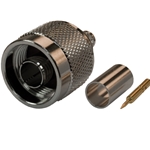 N-Type Connectors
N-Type ConnectorsN-type connectors are threaded RF connectors used to join coaxial cables. It was one of the first connectors capable of carrying microwave-frequency signals, and was invented in the 1940s by Paul Neill of Bell Labs. The N connector follows the MIL-C-39012 standard, defined by the US military, and comes in 50 and 75 ohm versions. The 50 ohm version is widely used in the infrastructure of land mobile, wireless data, paging and cellular systems. The 75 ohm version is primarily used in the infrastructure of cable television systems.
-
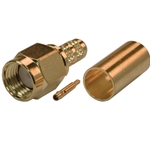 SMA Connectors
SMA ConnectorsSub-Miniature Version A (SMA) connectors are coaxial RF connectors developed in the 1960s as a minimal connector interface for coaxial cable with a screw type coupling mechanism. The connector has a 50 Ω impedance. It offers excellent electrical performance from DC to 18 GHz.
-
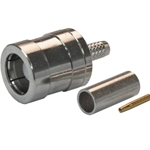 SMB Connectors
SMB ConnectorsSub-Miniature Version B (SMB) connectors are coaxial RF connectors developed in the 1960s. SMB connectors are smaller than SMA connectors. They feature a snap-on coupling and are available in either 50 Ω or 75 Ω impedance. They offer excellent electrical performance from DC to 4 GHz.
-
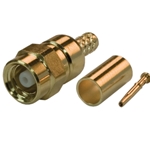 SMC Connectors
SMC ConnectorsSub-Miniature Version C (SMC) connectors are coaxial RF connectors developed in the 1960s. They use a #10-32 UNF threaded interface, available in 50 Ω or 75 Ω impedances. They offer electrical performance from DC to 10 GHz.
-
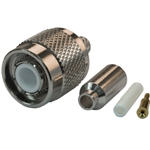 TNC Connectors
TNC ConnectorsThreaded Neill-Concelman (TNC) connector is a threaded version of the BNC connector. The connector has a 50 Ω impedance and operates best in the 0–11 GHz frequency spectrum. It has better performance than the BNC connector at microwave frequencies. Invented in the late 1950s and named after Paul Neill of Bell Labs and Carl Concelman of Amphenol, the TNC connector has been employed in a wide range of radio and wired applications. Used in consumer networking equipment, transmit and receive antennas, power/tallies/intercom, wireless microphone systems, etc.

